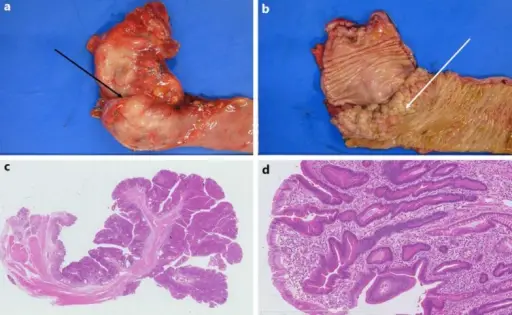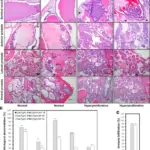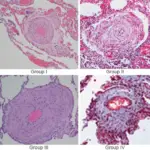Nutritional pathology is any of the nutrient-related diseases or conditions. Nutritional pathology can cause illness in humans. A nutritional disease is any of the nutrient-related diseases and conditions that cause illness in humans.
Nutritional pathology includes:
- Malnutrition
- Anorexia nervosa
- Bulimia
- Dietary insufficiency
- Vitamin deficiencies
- Vitamin excess
- Obesity
What is Malnutrition?
Malnutrition is a state of nutrition excess or deficiency.
Examples of malnutrition include:
- Cachexia
- Marasmus
- Kwashiorkor
What is Cachexia?
Cachexia is loss of adipose tissue and muscle loss that is not entirely reversed with nutritional supplementation. Diseases associated with cachexia include cancer, congestive heart failure, chronic obstructive pulmonary disease, emphysema, chronic kidney disease, and AIDS.
What is Marasmus?
Marasmus is a due to protein-energy malnutrition. Marasmus occurs as a result of total calorie insufficiency, which results in loss of adipose tissue and muscle.
What is Kwashiorkor?
Kwashiorkor is due to protein-energy malnutrition. Kwashiorkor is associated with a poor-quality diet high in carbohydrates but low in protein. Kwashiorkor is associated with characteristic bilateral pitting pedal edema and ascites.
What is Anorexia Nervosa?
Anorexia nervosa is an eating disorder due to restriction of energy intake, which leads to significantly low body weight such as a BMI of <= 18.5 Kg/m2. Patients may have an intense fear of gaining weight and distorted body images.
What is Bulimia?
Bulimia nervosa is a condition that occurs most commonly in adolescent females, characterized by binge-eating. The binge eating is followed by inappropriate compensatory behaviors such as vomiting or extreme exercise.
What is Dietary Insufficiency?
Dietary insufficiency is not getting enough nutrients such as vitamins and minerals.
Dietary insufficiency may be due to:
- Alcoholism
- Ignorance
- Illness
- Poverty
- Self-imposed reasons
What are Vitamin Deficiencies?
Vitamin deficiencies are conditions associated with long-term lack of a vitamin. Primary deficiencies are caused by not enough vitamin intake. Secondary deficiencies are due to an underlying disorder such as malabsorption it is called a secondary deficiency.
What is Vitamin Excesses?
Vitamin excess is due to an excessive amount of vitamin in the system, which may be due to excessive consumption, or metabolic defects.
What are the Water Soluable Vitamins?
Water soluble vitamins include:
- Biotin
- Folate
- Niacin
- Pantothenic Acid
- Riboflavin
- Thiamine
- Vitamin B12
- Vitamin C
What are the Fat Soluable Vitamins?
Fat soluble vitamins include:
- Vitamin A
- Vitamin D
- Vitamin E
- Vitamin K
| Water-Soluble Vitamins | Vitamin Deficiency Diseases | Symptoms | Vitamin Excess Diseases | Symptoms |
| Biotin | Biotin Deficiency Disease | Rashes (erythematous periorofacial macular rash), Brittle hair, Hallucinations, Fatigue, Generalized muscular pains (myalgia), Paresthesias | Biotin Toxicity | Rashes, Digestive issues |
| Folate | Folate Deficiency, Vitamin B9 Deficiency, Folate Deficiency Anemia | Lack of appetite, Weight loss, Weakness, Abnormal heart beat, Macrocytic, megaloblastic anemia, Neural tube defects, Spina bifida, Cerebellar ataxia | Folate Toxicity | Altered taste, Nausea, Confusion |
| Niacin | Pellagra | Dermatitis, Dementia, Diarrhea Glossitis, Cheilosis, Stomatitis | Niacin Toxicity | Flushing, Nausea, Vomiting, ItchingHepatomegaly |
| Pantothenic Acid | Pantothenic Acid or Vitamin B5 Deficiency | Impaired energy production due to low CoA levels, Numbness in hands and feet, Cramps | Pantothenic Acid Toxicity | Diarrhea |
| Riboflavin | Ariboflavinosis | Fatigue, Blurred vision, Swollen throat, Dry skin | Riboflavin Toxicity | No known toxicity |
| Thiamine | Thiamine Deficiency or Beriberi | Weight loss, Fatigue, Wernicke’s encephalopathy | Thiamine Toxicity | No known toxicity |
| Vitamin B12 | Vitamin B12 Deficiency Anemia, Cobalamin Deficiency or Pernicious Anemia | Macrocytic anemia, Glossitis, Neuropsychiatric issues | Vitamin B12 Toxicity | Nausea, Vomiting, Headache |
| Vitamin C | Vitamin C Deficiency, Scurvy | Scurvy, Corkscrew hairs, Swan-neck hairs, Perifollicular hemorrhages, Ecchymosis, Splinter hemorrhages in nails, Hemarthrosis | Vitamin C Toxicity | Renal colic |
| Fat-Soluble Vitamins | Vitamin Deficiency Diseases | Symptoms | Vitamin Excess Diseases | Symptoms |
| Vitamin A | Vitamin A deficiency or hypovitaminosis A | Night blindness, Skin irritation, Keratomalaci, | Hypervitaminosis A | Altered mental state, Vision changes, Headache, Nausea, Higher sensitivity to sunlight |
| Vitamin D | Hypovitaminosis D | Fatigue, Bone pain, Muscle weakness, Cramps | Vitamin D toxicity, or hypervitaminosis D | Dehydration, Vomiting, Diarrhea, Cramps. |
| Vitamin E | HypovitaminosisE or Ataxia (rare genetic disorder) | Ataxia, Upward gaze issues, Hyporeflexia | Vitamin E Toxicity | Nausea, Gastric distress, Abdominal cramps, Bleeding |
| Vitamin K | Vitamin K Deficiency | Bruising, Bleeding, Petechiae, Hematomas | Vitamin K Toxicity | Jaundice |
What is Obesity?
Obesity is excessive or abnormal accumulation of fat (excess adiposity) that impairs health via its association to the risk of development of diabetes mellitus, cardiovascular disease, hypertension, and hyperlipidemia. A BMI of 30 or > 30 Kg/m2 is considered as obese. Obesity is a major public health issue.
What is Leptin?
Leptin is a hormone primarily made by adipose cells and enterocytes in the small intestine that helps regulate energy balance by inhibiting hunger, which in turn diminishes fat storage in adipocytes.
The primary function of leptin is the regulation of adipose tissue mass through central hypothalamus mediated effects on hunger. Leptin decreases hunger.
What is Adiponectin?
Adiponectin is a protein hormone that helps regulate glucose levels.
Increased adiponectin levels correlate with a lower risk of diabetes mellitus type 2. Adiponectin concentrations increase during fasted states.
What is Ghrelin?
Ghrelin is the hunger hormone. Increased levels of ghrelin are associated with hunger. Ghrelin makes you want to eat.
What are Adipocytes?
Adipocytes are fat cells. Adipocytes are the cells that primarily make adipose fat tissue.
What are the Consequences of Obesity?
The consequences of obesity include:
- Insulin resistance
- Hypoventilation
- Hypersomnolence
- Hyperinsulinemia
- Hypertriglyceridemia
- Non-alcoholic fatty liver disease
- Cholelithiasis
- Osteoarthritis
- Cancer
| Consequences of Obesity | Definition | Relation with Obesity |
| Insulin resistance | Insulin resistance (IR) is a pathological condition in which cells do not respond to insulin | Obesity is associated with an increased risk of developing insulin resistance and type 2 diabetes |
| Hypoventilation | Respiratory depression, Hypercapnia, Respiratory acidosis | Extra fat on the neck or chest or across your abdomen may make it difficult to breathe |
| Hypersomnolence | Hypersomnolence refers excessive daytime sleepiness | Obstructive sleep apnea, and excessive daytime sleepiness |
| Hyperinsulinemia | Hyperinsulinemia is a condition in which there are increased levels of insulin circulating in the blood stream | Elevated free fatty acid levels in obesity cause insulin resistance |
| Hypertriglyceridemia | Hypertriglyceridemia is the presence of excessive amounts of triglycerides in the blood | The mechanism of hypertriglyceridemia is related to obesity and insulin resistance |
| Non-alcoholic Fatty Liver Disease | Non-alcoholic fatty liver disease is excessive fat build-up in the liver without known cause such as alcohol use | Non-alcoholic fatty liver disease is strongly associated with obesity |
| Cholelithiasis | The term cholelithiasis may refer to the presence of gallstones or to any disease caused by gallstones | Obesity can lead to gallstones because it alters the balance of cholesterol versus lecithin versus bile acids in the gallbladder |
| Osteoarthritis | Osteoarthritis (OA) is a type of degenerative joint disease due to the breakdown of joint cartilage and underlying bone | The most significant impact of obesity on the musculoskeletal system is associated with osteoarthritis (OA) |
| Cancer | Cancer is a group of diseases that involve abnormal cell growth with the potential to invade or spread to other areas of the body | Excess body fat increases the risk for several cancers such as colorectal cancer, breast cancer, uterine cancer, and pancreatic cancer |



